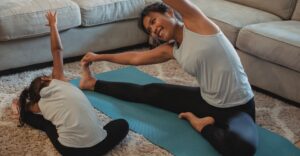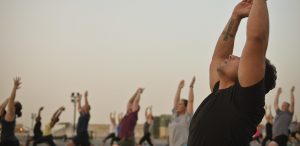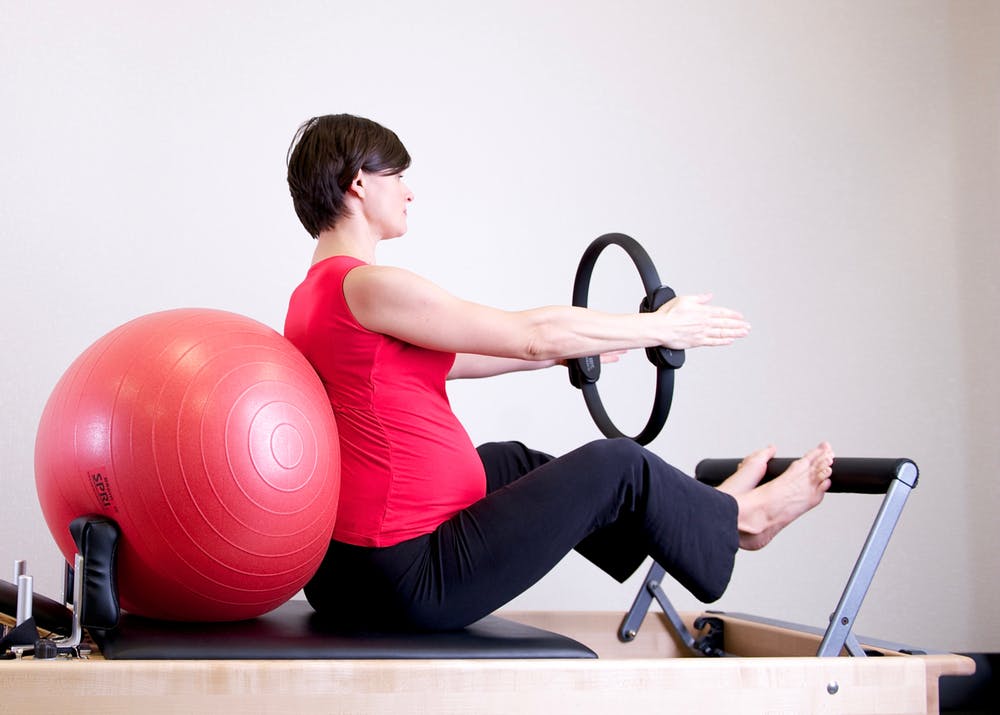What is stretching, and should you stretch? Stretching can be performed by anybody, and for the most part, should be performed by everyone to keep our bodies mobile and functional. Stretching, in short, is an activity performed to help keep our muscles flexible. Flexibility is important to maintain our joint health and ability to complete everyday mundane tasks. A task such as walking.
Walking is something that we do several times a day without ever needing to think about what’s actually happening in our bodies to allow us to move. For some people, such as those with a stroke or spinal cord injury, walking takes a copious amount of effort, both physical and mental. A small part of that physical effort involves muscular flexibility. Think about this: you’ve just woken up from a lovely night’s slumber and you automatically lengthen out your legs and raise your arms up over your head reaching for the sky. You’re stretching! Allowing those muscles to move, to push blood and oxygen throughout the body, and subsequently help you get up out of bed.
Aside from your morning stretch, it would be beneficial to add a stretching regimen to your daily routine to keep your joints and muscles happy. According to Mayo clinic, some benefits to stretching include:
- Improvement in performance during physical activity
- Decreased risk of injury
- Helps your joints move through their full range of motion
- Increased blood flow
- Enable the most effective work of your muscles
- Improve your ability to perform daily function
While there is no perfect time to stretch, there are a few moments in the day that could be considered better times to stretch.
Morning stretches. Stretching in the morning can help move the stagnant fluid from your restful sleep throughout the body. This helps reduce some stiffness and pain that can occur in the morning.
Before bed. A study performed in 2014 reveals that stretching activates your parasympathetic nervous system, which aids in feelings of calmness and euphoria. This could ultimately lead to more restful sleep.
Following a workout. Studies have long supported the use of long sustained stretches following a moderate workout. Stretching after a workout can reduce risk for injury to the muscles and joints.
However, as beneficial as stretching can be, stretching incorrectly could increase your risk for injury. It’s important to consider the following when stretching:
- Warm-up before you stretch. Stretching should not be done as a stand alone activity. Research suggests that stretching cold muscles can, in fact, do more harm than good. You should always perform a light movement to warm up before stretching. A little walk goes a long way before stretching.
- Know your limits! Not everyone is built to be the next Simone Biles. We have to meet our bodies where they are at. It isn’t important to be able to touch the floor with your palms flat from a standing position, but it IS important to be able to bend over comfortably to pick up the legos from the floor.
- No pain, please! Stretching should not be a painful endeavor. It should be comfortable enough to where you can have a conversation about the most dramatic season of The Bachelorette ever! Moreover, it should be comfortable enough to where you can hold it easily for 30 seconds. (Some research supports up to 60 second holds)
- Think big. Stretch your big muscle groups: front of your legs, back of your legs, your butt, and lower and upper back. Spend equal time on each stretch, and don’t forget to stretch both sides of the body. In addition to thinking big, also think specific. Like to golf? Spend extra time on those upper back and shoulders. Like to type or game? Spend some time on your wrists and fingers.
- Don’t over do it! Here is where people make mistakes. If you always feel “tight”, stretching extra will not help you feel better. Ideally, one should not need to stretch more than once per day, sometimes even no more than every other day. Muscle spindles (located in each muscle belly) are equipped with a myotatic reflex. What this means is that if a muscle is stretched too far, too fast, or too quickly it will elicit this stretch reflex, creating a protective contraction mechanism against your stretch. Attempting to stretch a contracted muscle could lead to muscle injury.
If you’re a beginner and are looking for a few basic stretches to get you started, there are a few that are generally safe for most.
Cat and Cow. Position yourself on your hands and knees. Suck your belly button in up toward the sky, arching your back, and hold this position for 5 seconds. Breathe out as you sag your belly button down toward the floor, and hold this position for 5 seconds. Repeat this sequence of movement 3-5 times, within your comfort zone.
Supine hamstring stretch. Position yourself lying on your back, both legs straight. Grab one leg behind the knee with both hands (clasp your hands together behind your knee), and pull the knee, bending it as you pull up, toward your chest. Slowly and gently straighten out your knee toward the ceiling until you feel a slight pull in your hamstring (the muscle in the back of your thigh). Hold this stretch for 30 seconds, and repeat with each leg 2 times.
Seated sunrise stretch. Position yourself seated in a chair, with good upright posture. Raise your arms out to the side and bring them all the way up by your ears, fingertips reaching up for the sky. Picture trying to push up the ceiling with your fingertips as you reach up as tall as your body allows, and breathe out. Hold this position for 10 seconds, slowly release your arms down as you breathe in. Repeat this movement 3-5 times, within your comfort zone.
So, the long answer made short is, yes, you should be stretching. The caveat is, safely and within the guidelines listed above. There is no one formula that fits all when it comes to muscle health, but when performed properly, stretching can improve your general body health. As always, if you’re unsure, reach out to a professional.
You probably can’t be the next Simone Biles, but you can be a healthy parent/grandparent who can easily get on and off the floor with the kiddos.








